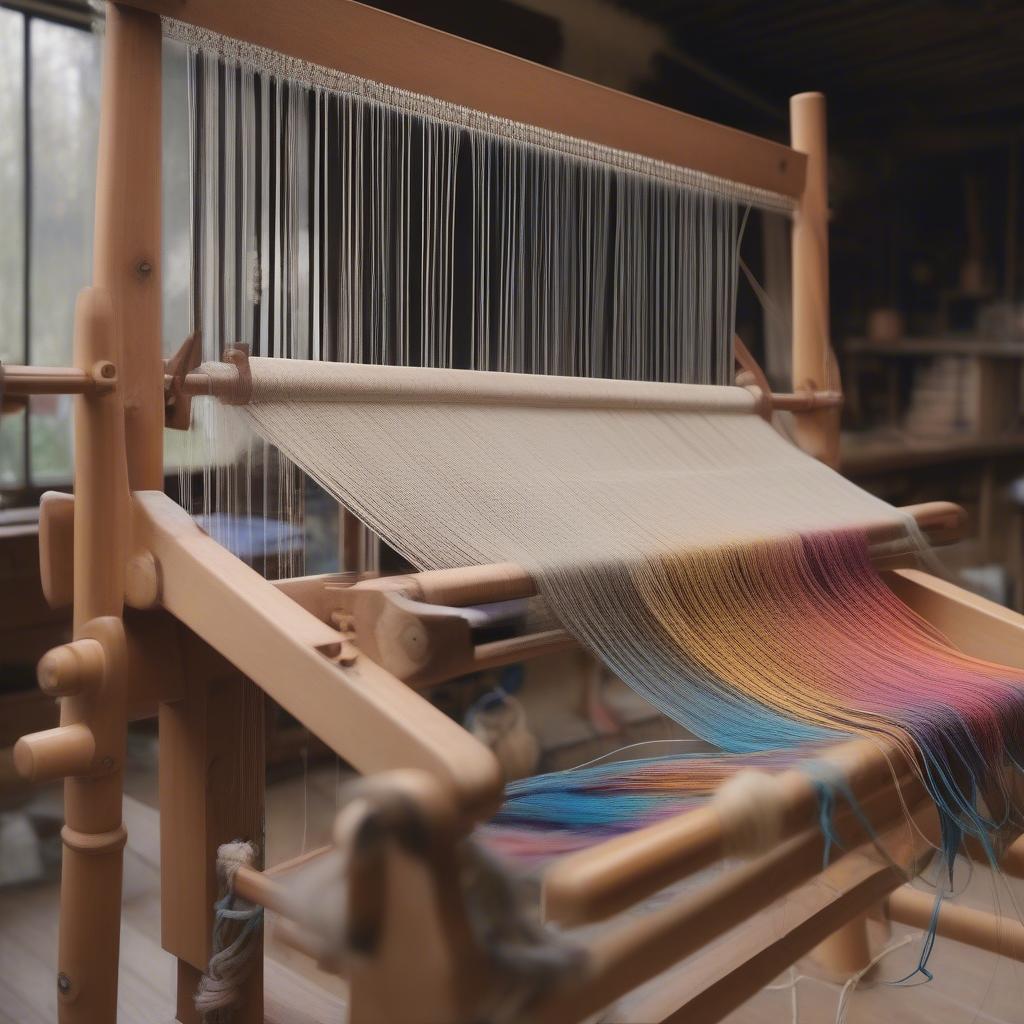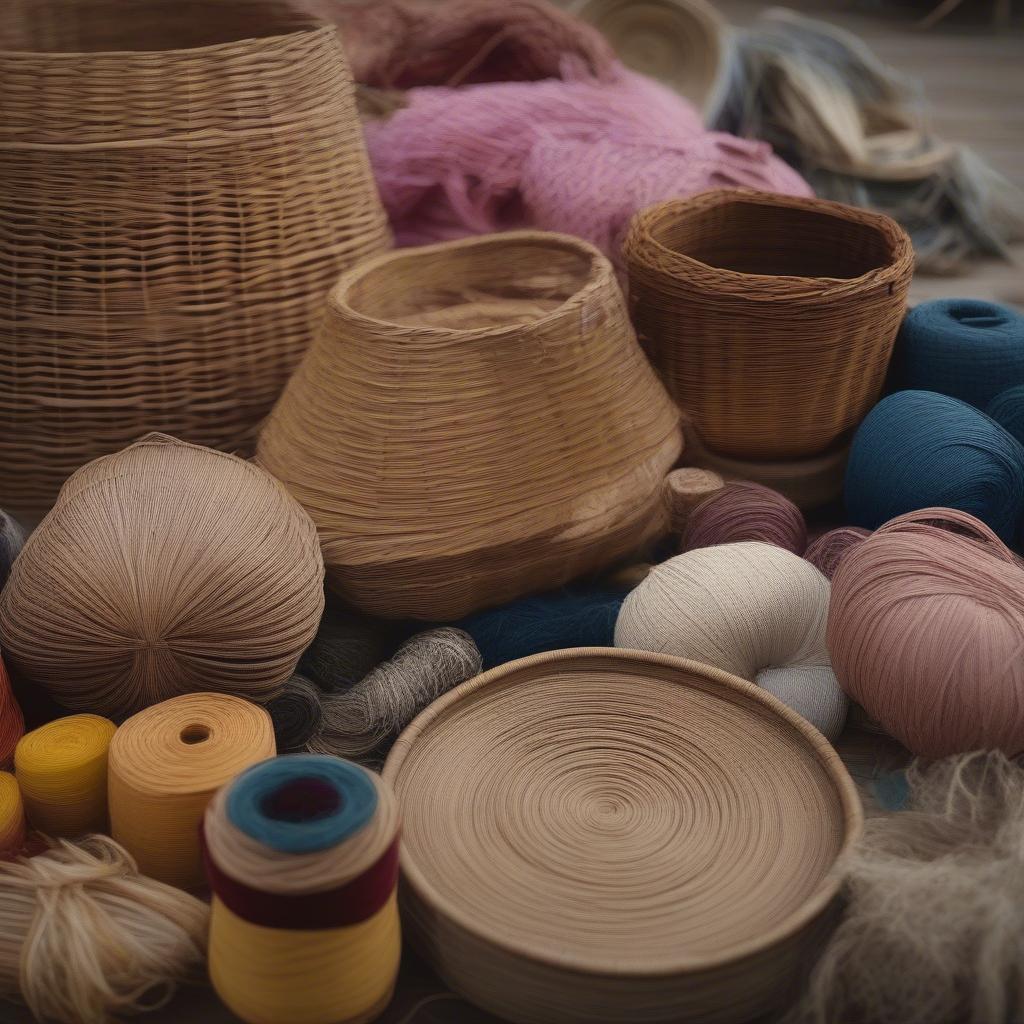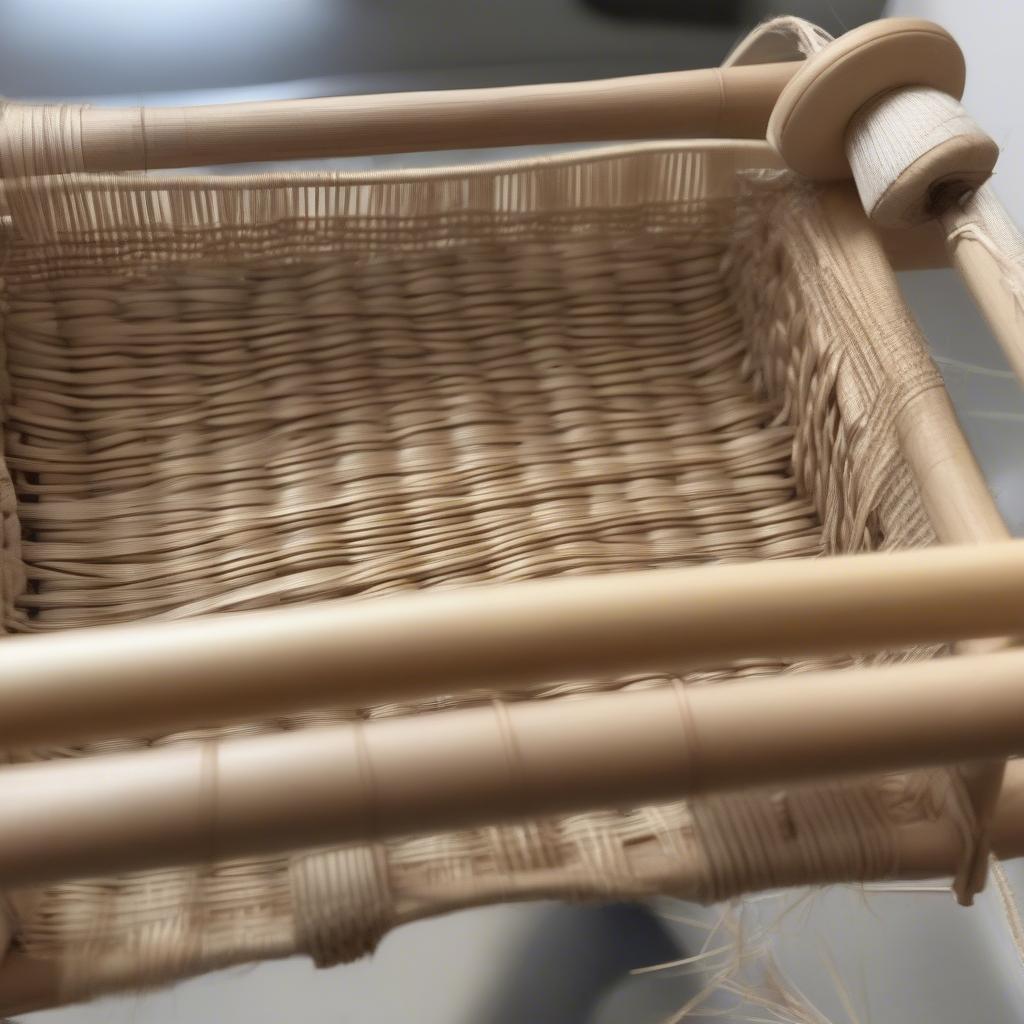Basket Weaving
How to Basket Weave on a Loom
Learning How To Basket Weave On A Loom opens up a world of crafting possibilities, from functional baskets to decorative wall hangings. This guide will provide a comprehensive overview of loom weaving, equipping you with the knowledge and techniques to create your own beautiful woven masterpieces. We’ll explore different materials, weaving patterns, and helpful tips to ensure your basket weaving journey is a success.
Understanding Loom Weaving Basics
Loom weaving involves interlacing vertical and horizontal strands of material, called warp and weft, respectively. The loom provides a structured framework to maintain tension and create consistent weaving. Different types of looms exist, from simple cardboard looms to more complex frame looms, each offering varying levels of control and complexity. Choosing the right loom depends on the size and style of the basket you wish to create.
 Setting up a basket weaving loom
Setting up a basket weaving loom
Choosing Your Materials
The materials you choose significantly impact the final look and feel of your basket. Natural fibers like reed, wicker, and rattan are popular choices for their durability and rustic charm. For a more vibrant look, consider using colorful yarn or fabric strips.
 Various materials for basket weaving
Various materials for basket weaving
Getting Started: How to Basket Weave on a Loom
Before you begin weaving, you’ll need to warp your loom. This involves creating the vertical threads that will form the foundation of your basket. The number of warp threads depends on the size and desired density of your weave. Once the loom is warped, you can begin weaving the weft through the warp, following your chosen pattern.
Simple Weaving Techniques
- Plain Weave: This fundamental technique involves passing the weft over and under alternating warp threads, creating a simple, yet elegant pattern. Check out our guide on simple basket weave on loom for a detailed tutorial.
- Twining: This technique involves twisting two or more weft strands together as they are woven through the warp, creating a textured, rope-like effect.
Advanced Weaving Techniques
- Basket Weave Stitch: This stitch creates a checkered pattern resembling woven fabric. Find inspiration in our weave basket chess checker board project.
- Soumak Weave: This technique produces a decorative, raised texture, adding dimension and visual interest to your basket.
Finishing Touches and Troubleshooting
Once you’ve reached the desired height of your basket, it’s time to secure the ends and remove it from the loom. This involves carefully weaving in the loose ends and trimming any excess material.
Common Loom Weaving Challenges
- Uneven Tension: Maintaining consistent tension throughout the weaving process is crucial for creating a uniform basket. Practice and patience are key to mastering this skill.
- Warp Threads Breaking: This can occur if the warp threads are too tight or the material is too brittle. Ensuring proper tension and using high-quality materials can help prevent breakage. For smaller projects, a small basket weave rainbow loom can be a great starting point.
“Loom weaving allows for incredible creativity and control,” says renowned basket weaver, Anya Petrova. “With practice, you can create intricate patterns and unique designs that reflect your personal style.”
 A completed woven basket on a loom
A completed woven basket on a loom
Conclusion
Learning how to basket weave on a loom is a rewarding craft that allows you to create beautiful and functional pieces. By understanding the basics, choosing the right materials, and mastering different weaving techniques, you can embark on a creative journey and produce stunning woven baskets. If you’re interested in expanding your crafting skills further, you might find our loom knit basket weave slouch hat tutorial helpful, or explore floral designs with the p kaufmann basket-weave blue floral collection.
FAQ
- What type of loom is best for beginners?
- What materials are commonly used for basket weaving?
- How do I warp a loom?
- What are some basic basket weaving stitches?
- How do I finish a woven basket?
- Where can I find basket weaving patterns?
- What are some common troubleshooting tips for loom weaving?
Common Loom Weaving Scenarios
- Scenario 1: You’re a beginner and unsure where to start. Consider using a simple cardboard loom and readily available yarn to practice basic weaving techniques.
- Scenario 2: You want to create a sturdy basket for storage. Choose durable materials like reed or wicker and a frame loom for greater control and stability.
Further Exploration
For more inspiration and guidance, explore our articles on different weaving techniques, materials, and project ideas.
When you need assistance, please contact our Hotline: +84 388 951 999, our address: Hanoi, Vietnam or Tech Avenue, Suite 12, San Francisco, CA 94105, USA. We have a 24/7 customer service team.
